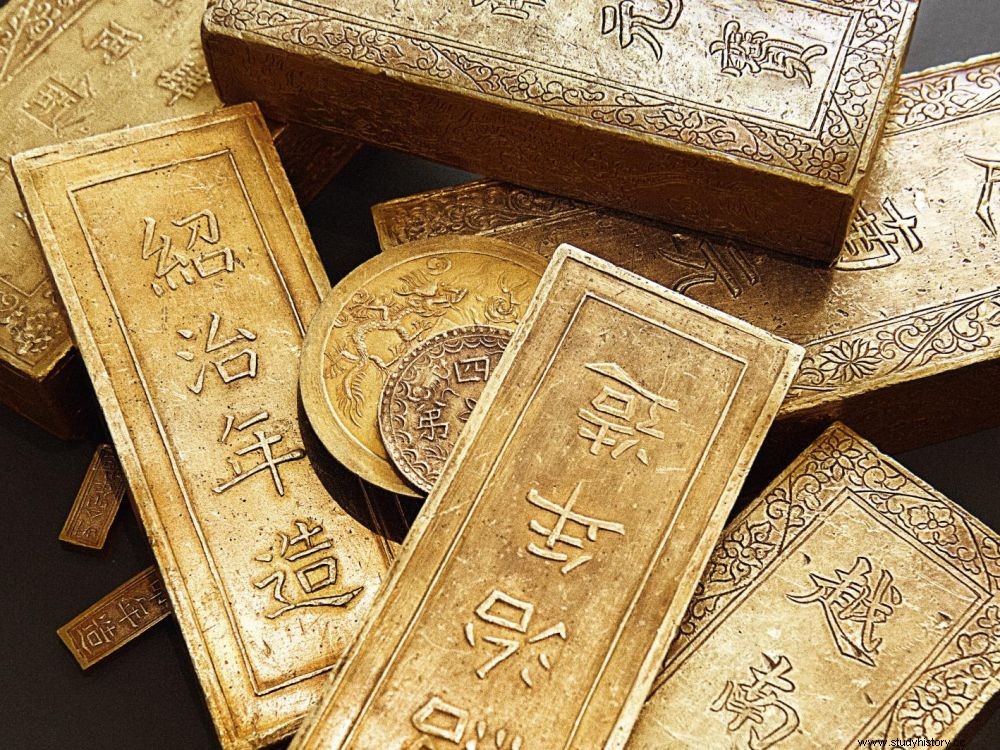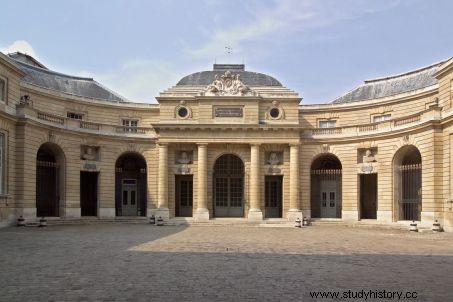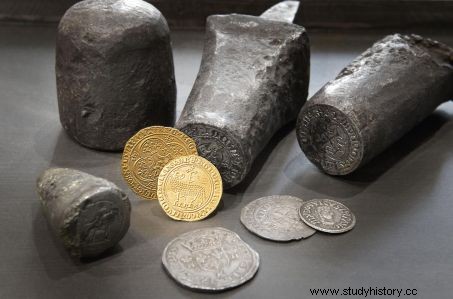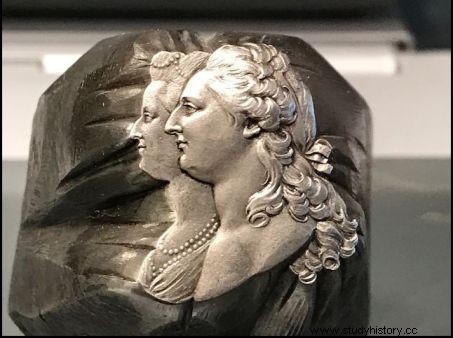La Monnaie de Paris, now renamed 11 Conti-Monnaie de Paris, unveils its treasures after six years of work and restructuring.

Gold bars from the Treasury of Hue (1886).
A transformation! Born 1150 years ago, "the oldest company in France “, according to Aurélien Rousseau, CEO of Monnaie de Paris, has just undergone a total transformation. The venerable building located on Quai Conti, on the banks of the Seine, right next to the French Academy, is also the “last factory in Paris » in operation where gold coins, decorations and medals are produced for the whole world (more than 200,000 each year). Dean of factories, closed to the public since its creation, it is thus a whole unknown world of craftsmen and coiners that visitors will be able to discover from September 30, 2017 .

Court of Honor at 11 Conti-Monnaie in Paris.
After 6 years of work, a new museum now offers more than 2000 m 2 heritage exhibitions, with a direct view of the coin-making workshops where more than 150 craftsmen still work. It will be possible to discover, in addition to all the productions of the manufacture and the methods and tools used over the centuries to mint coins, "treasures never shown, unveiled for the first time" , explains Béatrice Coullaré, art historian.

Hammer strike presented in the Hall of Manufacture. © 11 Conti - Monnaie de Paris
Among them, elements of the "treasure of Hue are exhibited in a room adorned with symbolic armored doors:this "catch of war", consisting at the time of 62 gold bars, medals and 4 silver bars, had been carried out by the French colonial troops at the expense of the empire of Annam (Indochina) in 1886. The same for that of Slot Ter Hoog , a ship of the Dutch company, whose cargo sunk in 1724 was full of coins and silver bullion from the Americas bearing the arms of Spanish sovereigns. Some pieces with the effigies of Roman emperors of the III th century from the archaeological treasure of the Authieux are also presented. Without forgetting eight 18 th gold coins century from the "treasure of rue Mouffetard “, a set of 3356 gold coins fortuitously brought to light in 1938, by workers working in this Parisian street.
Visitors will also be able to admire some royal portraits or punches – iron engravings mixed with carbon – which conveyed the public – and therefore political – image of the sovereigns. Among the 6,500 preserved and inventoried in the reserves of the Mint, are unveiled effigies of Louis XIV at different ages or of Louis XV as a child, portraits of Marie-Antoinette and Louis XVI, as many unknown masterpieces by masters engravers.

Queen Marie-Antoinette and Louis-XVI hallmark. © Bernadette Arnaud
Alternately safe for kings, safe for the Empire, safe for the Republic, Monnaie de Paris now opens all its doors... or almost. "Some never will “, specifies Aurélien Rousseau who also manages the monetary establishment of Pessac (Gironde), “two emblematic places, two sides of the same coin where the French currency is made:the euro (see box). An institution that still harbors some secrets.
Millions of Euros
The Monnaie de Paris site in Paris is linked to that of Pessac (Gironde), where 1.5 billion coins are industrially minted each year, with a sovereign part, the production of euros, and another, intended for central banks of some forty countries including Bolivia, Venezuela, Lebanon, Costa Rica, West African states, Bangladesh and Saudi Arabia.
